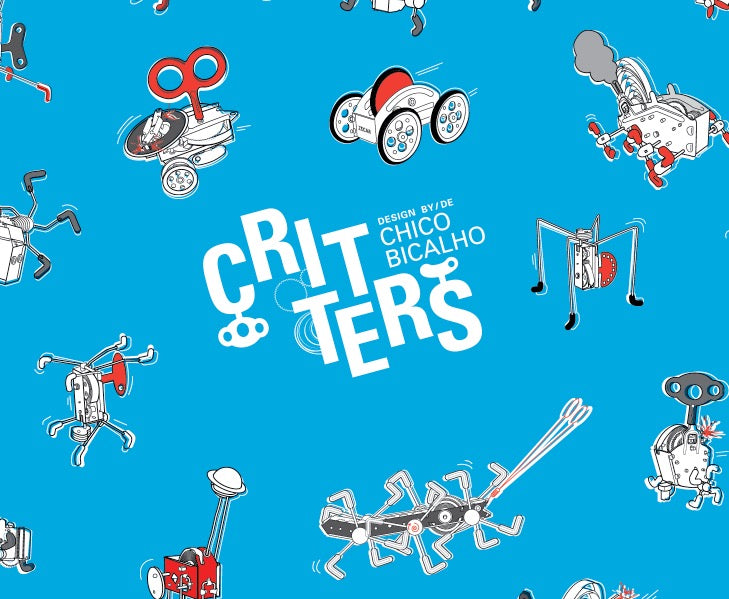By: Nick Pappas
Growing up, Kikkerland designer Chico Bicalho was fascinated with objects. He melted lead in cold water, created weird boxes, and made quirky art on the streets of Rio de Janeiro. When other little kids doodled on paper, Chico built things.
So, it was only natural that he would help build an entire forest.
“It’s the project of my life – it’s the work of my life. I never imagined 30 years ago that I would plant a forest,” Bicalho said.
The Project, Mil Folhas, began in 1996 to reforest a public area destroyed by the Brazilian National Roads Department in the mid-1970s. While duplicating a road, the government made the decision to tear down 200,000 square meters of lush, green Atlantic Forest. A simple addition became a devastating subtraction.
“It was a beautiful piece of forest that was destroyed for no reason at all,” Bicalho said.
Now, nearly three decades later, the landscape has been reclaimed. Since 1996, more than 325,000 trees from over 150 different species have been planted as part of the reforestation project. It took hard work, imagination, and a little luck.
A Story Filled with Little Lucky Twists
After receiving a BFA in sculpture from RISD and MFA in photography at NYU, Bicalho spent his post-college years in New York City, doing production work for Annie Leibowitz and hanging out with other young designers.
They frequented Canal Surplus, an eccentric shop filled with strange industrial supplies. Bicalho was like a kid in a toy store. Among thousands of fascinating gadgets the shop sold, there were little gear boxes used for classic wind-up chattering teeth.
“I had this idea of welding legs to the thing,” Bicalho said. “The first critter was born.”
With the turn of a key, Bicalho’s critter danced and twisted like a futuristic daddy long-legs. It was instantly a hit. While helping his friend, David Dear, deliver a mirror to the home design store Mxyplyzyk, Bicalho showed one of his critters to the owner, Kevin Terpstra. Kevin ordered 12 on the spot.
Within an hour and a half, Kevin called. The store had completely sold out. He ordered 24 more.
“I became a one-person factory,” Bicalho said.
Bicalho continued to sell critters to Mxyplyzyk, but would add other vendors, including The Guggenheim Store.
By hand, he ended up making over 4,500 critters.
A Big Leap of Faith
Around this time, Bicalho met another young designer, a guy with a tiny office who lived on a boat. Jan van der Lande, the founder of Kikkerland, wanted to help Bicalho mass produce the critters by finding him a factory that, hopefully, had more than one person.
“He did what Dutch do the best after tulips and milk,” Bicalho said. They’re the best merchants in the world. They buy and sell stuff better than anyone.”
After a long search, van der Lande finally found a factory willing to make the critters. The only stipulation? He’d have to pay for a minimum order of 100,000 units up front. Van der Lande jumped at the opportunity.
“It was a big leap of faith for them,” said Bicalho.
Van der Lande displayed the critters at the Kikkerland booth at the Javits Center. His first buyer bought the entire lot of 100,000.
A Shared Sense of Purpose
As Bicalho took on his reforestation project, he had the idea of creating a special toy he called the ZéCar, with all the royalties from ZéCar sales designated entirely to planting trees.
“The forest was destroyed because of a road so cars would drive by,” Bicalho said. “So what’s better than a car to fund replanting the forest again?”
Soon after, van der Lande and Kikkerland Design offered a generous matching fund, doubling the budget of the project. With the royalties and Kikkerland match, the project went from 20,000 trees to 320,000 trees.
“Kikkerland was fundamental. Jan was fundamental because he embraced the project. It’s as much a Kikkerland project as it is my project.”
Most importantly, through the group’s website, www.projetomilfolhas.com, Bicalho has painstakingly created a manual for others who want to take on the task of planting a tropical rainforest in the Atlantic forest biome.
“There was no text, nothing, not one unit of text, one paper that explained how to reforest in Brazil, so I made an effort to do it myself,” Bicalho said.
He hopes the research will help others more efficiently reforest in the future. Bicalho believes that everyone can make a difference.
“If you are concerned with the environment but you don’t have the ‘oomph’ to undertake a big project, help people who are doing it. There are people doing amazing stuff.”
































